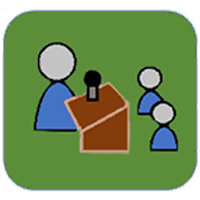Events

3D fuel characterization for modeling of wildland fire behavior and smoke
Webinar recording. Rapid advancements in wildland fire modeling are promoting innovations in how we characterize and map wildland fuels. Before these models can be widely used, more research on fuel characterization and mapping methods is needed to support3D model inputs. The 3D Fuels Project is characterizing surface and canopy fuels on pine-dominated sites in the…

Advanced burn boss workshop and fire science symposium
The Advanced Burn Boss Workshop and Fire Science Symposium (click "Log in as Guest" in the event portal) is a combined virtual event that will provide targeted training for burn bosses: RT300, IFTDSS, and smoke modeling, as well as interactive presentations for a wide audience that bridge research and practice using the three pillars of the Cohesive…

What are fuel breaks, why are we doing them?
Webinar recording and Q & A. This is the first of six webinars in our Fuel Breaks in Sagebrush Country: A Multidisciplinary Webinar Series and Discussion. To learn about other webinars in the series, see the webinar series webpage. This webinar features the following topics and speakers: Purpose of fuel breaks - Jeff Rose, BLM…

Fuel Breaks in Sagebrush: Webinar Recordings
View Webinar Series Flyer. The Fuel Breaks in Sagebrush: A Multidisciplinary Webinar Series and Discussion is made up of six webinars featuring topics important to fuel breaks in the Great Basin. 3/25 – What Are Fuel Breaks, Why Are We Doing Them? (11 PDT/12 MDT)- Recording and Q & A Purpose of fuel breaks -…

Breaking down the Sagebrush Conservation Strategy, part 1
Webinar recording. In coordination with the Western Assoc of Fish and Wildlife Agencies, BLM, USFWS, and USGS, we are hosting a webinar that will introduce the content of the first part of the Sagebrush Conservation Strategy. The strategy highlights continuing pressures from unprecedented wildfires fueled by invasive annual grasses, as well as cropland conversion and…

Ecological considerations of fuel breaks
Webinar recording. This is the second of six webinars in our Fuel Breaks in Sagebrush Country: A Multidisciplinary Webinar Series and Discussion. To learn about other webinars in the series, see the webinar series webpage. This webinar features the following topics and speakers: Overview of fuel break ecological considerations - Eva Strand, University of Idaho…

Science x post-disturbance restoration
Webinar recordings. The SCIENCEx webinar series brings together scientists and land management experts from across U.S. Forest Service research stations and beyond to explore the latest science and best practices for addressing large natural resource challenges across the country. These webinars will be primarily management focused, but with applicability for participants from across sectors. SCIENCEx…

Fieldwork from afar: Remote sensing tools to inventory fuels and fire behavior
Webinar recording. Description: The idea of using sensors to remotely measure things is not new. Aerial photos taken from hot air balloons were first proposed as a tool for mapping streets in the 1850s. In 1941, a US Forest Service ranger developed a technique for mapping fuels with aerial photos. Recent advances in remote sensing…

Frameworks for conservation action in the Great Plains and sagebrush biomes
Webinar recording. Working Lands for Wildlife - the Natural Resources Conservation Service’s premier approach for conserving America’s working lands to benefit people, wildlife and rural communities - is excited to share information on two, action-based frameworks for conservation. The frameworks are the result of a multi-state planning effort and lay the foundation for the first…

Science gaps, modeling, and efficacy of fuel breaks
Webinar recording. This is the third of six webinars in our Fuel Breaks in Sagebrush Country: A Multidisciplinary Webinar Series and Discussion. To learn about other webinars in the series, see the webinar series webpage. This webinar features: Science and data gaps: How we’re addressing them – Doug Shinneman, USGS Current use of fire and…

